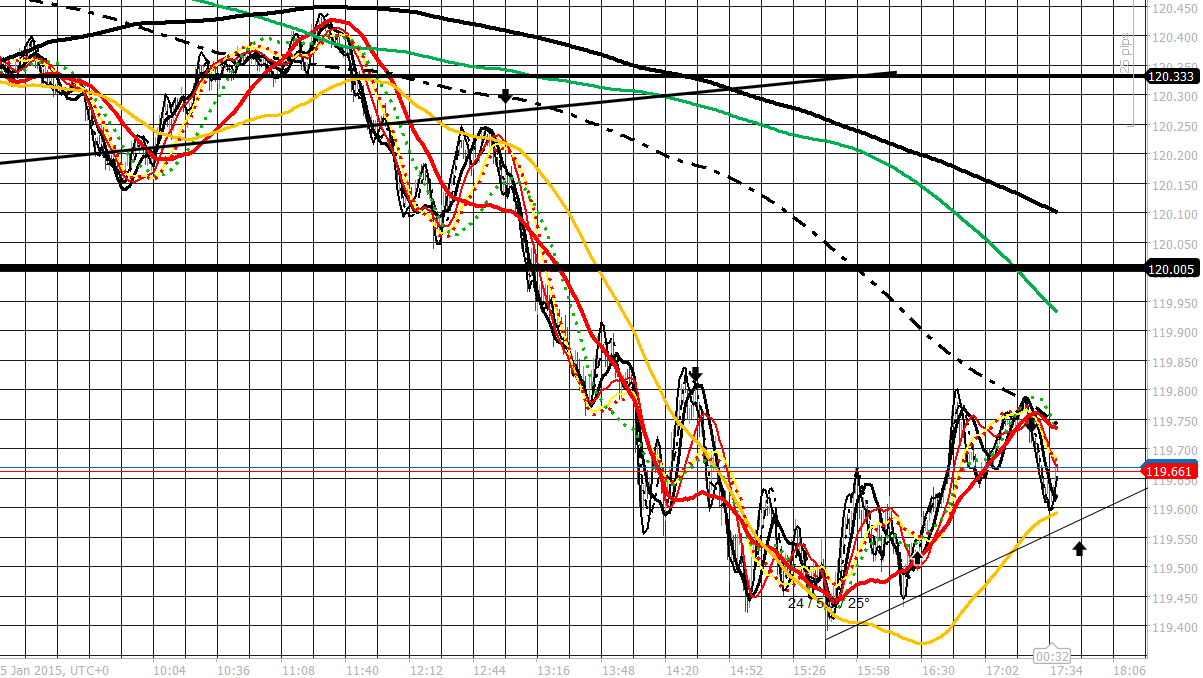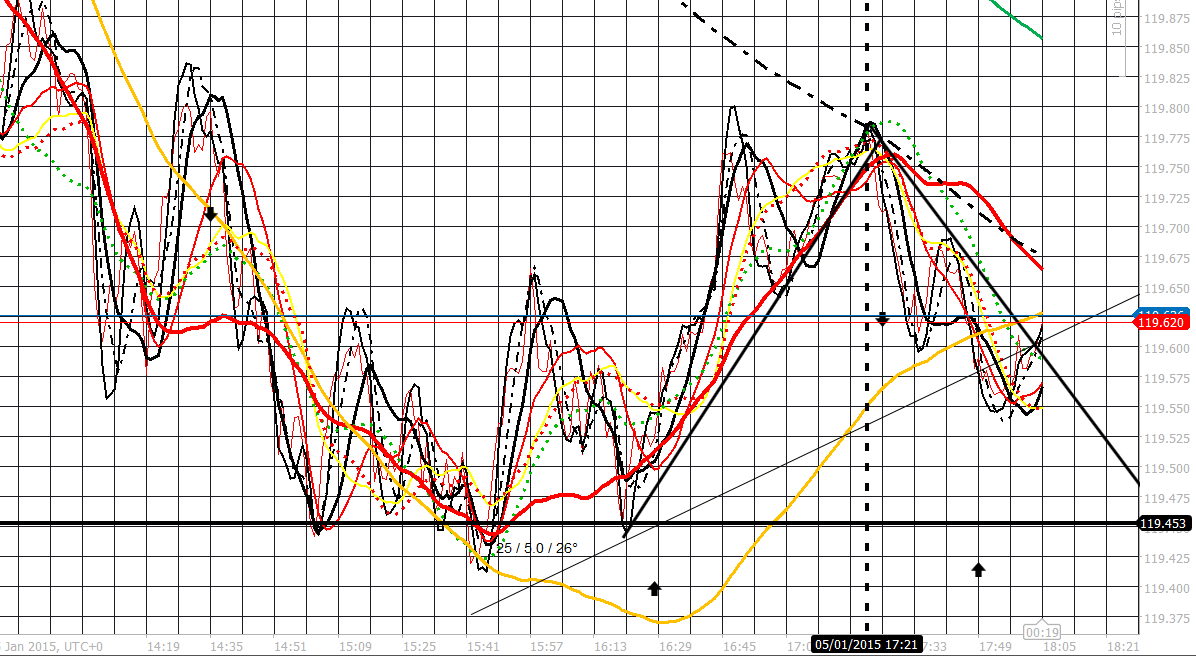hyperscalper
Member
- Messages
- 89
- Likes
- 10
More on Market Maker Book Analysis Theory
Good questions because it's such an interesting subject. I am unclear exactly what you're asking so I'll take a stab at it...
You're asking about Market type orders? I mean, instead of a Limit order? There's no difference, so long as the Limit order uses a "marketable" price and finds a counterparty immediately. No difference, but ECN implementations could introduce slight differences between the two order types.
So I'm saying that Market Makers (MM) as the primary Liquidity Providers (LP) on a fair and anonymous exchange are unable to "pull" their Bid/Offer at the instant that it is matched by a counterparty. They can certainly pull it a millisecond later if it hasn't been "hit" and the low-latency colocated supercomputers which manage the "virtual spread" distribution certainly do this. They retreat if they can, but in the nanosecond when the counterparty matches their quote, they have to honor it because the exchange (ECN, whatever) "matching engine" makes the match.
So, MM's will "skew" their distribution of Quoted size away from the Inside Market so that the large retail transactions are Forced to eat through several Tiers of the Depth of Market (aka The Book) in order for the total size to be satisfied. This "skewing" of the distribution of Quotes is also a key part of my hypothesis, which says that since they must honor Quotes to Counterparties, they therefore carefully control (statistically) their distributions of Quotes, as they cannot "back away" at the instant the Counterparty is found and matched. The VWAP of the Bid Tiers is a correlate of this behavior, where the "peak size" may be moved further away from the Inside Bid when MM does not wish to transact at those prices quite so eagerly...
Anybody who knows about Depth of Market should know that this is how Market Maker "manages" risk. "If you as a Large Retail player are going to sell 1000 lots at Market, then I'm going to force you to 'eat through" successively lower Bid prices until you accumulate the Total amount of your Retail Sell Market Order, and my Bids will therefore be Forced to Buy from you, BUT I (the MM) will Buying from you at a much lower VWAP."
We assume that the exchange "instantaneously" computes all of the Bid Tiers which are consumed to satisfy the Sell Order in this case, and that MM has no opportunity in the next nanosecond to "pull" Bids, realizing that a Huge order has just come in. So the Exchange would be "transactional" in that sense, not allowing MM's to pull away "in the middle" of the process of "consuming the Bid Tiers" to satisfy the size requirement of the Large incoming Retail Sell Order.
That much lower Buying price which MM receives is due to the Skewed Distribution of Quoted Size Bids on the Depth of Market, the Book. So MM automatically has a "defense mechanism" against Huge Retail sellers because of the way MM distributes Quote Size on the Depth of Market, given the fundamental fact that MM cannot "back away" from any matching Counterparty who Sells, in this case.
[As a matter of definition, a Retail order Sells to the Bid. A Wholesale transaction always sells to a Retail Counterparty, so Wholesale transactions always sell at the Ask or Offer, because they represent the Offer, and require a Retail Counterparty. This is what we mean by saying that MM always takes the Opposite side of every Retail transaction, since MM transactions are always Wholesale. Everyone else who is not MM, is normally Retail, or on certain exchanges, like LMAX, can be considered "competition" to MM by Bidding alongside MM's and stealing liquidity from them, but most ECN type exchanges do not permit Retail traders to do this.]
Dukascopy is also very good about limiting Counterparty Rejection, but it will happen a small percentage of the time. But on LMAX, in my experience it should never happen since the "exchange" is a separate entity making the decisions. This upsets Market Makers and forces them to be much more careful what they place on the Depth of Market, aka The Book. Good news for me, since I am hoping they have to be careful and that I can measure that behavior well enough to predict where they will move the market 🙂
We can talk about "Spoofing" of Quotes in some other discussion. Traders always like to talk about how "spoofing" makes it impossible to evaluate the Depth of Market, but evaluation algorithms can also take into account the fact that there will also be "spoofing". Another discussion, at another time ;-)
I haven't fully consumed my coffee but maybe that could clarify.
HyperScalper
It would certainly make sense for the key MM to be actively involved in several exchanges and that in itself would allow a degree of price manipulation on a short term basis. If your analysis has shown that there is consistent predictability then it sounds very exciting. I can see why being unable to pull your quote has a major advantage to retail traders but how would market orders affect this ?
Good questions because it's such an interesting subject. I am unclear exactly what you're asking so I'll take a stab at it...
You're asking about Market type orders? I mean, instead of a Limit order? There's no difference, so long as the Limit order uses a "marketable" price and finds a counterparty immediately. No difference, but ECN implementations could introduce slight differences between the two order types.
So I'm saying that Market Makers (MM) as the primary Liquidity Providers (LP) on a fair and anonymous exchange are unable to "pull" their Bid/Offer at the instant that it is matched by a counterparty. They can certainly pull it a millisecond later if it hasn't been "hit" and the low-latency colocated supercomputers which manage the "virtual spread" distribution certainly do this. They retreat if they can, but in the nanosecond when the counterparty matches their quote, they have to honor it because the exchange (ECN, whatever) "matching engine" makes the match.
So, MM's will "skew" their distribution of Quoted size away from the Inside Market so that the large retail transactions are Forced to eat through several Tiers of the Depth of Market (aka The Book) in order for the total size to be satisfied. This "skewing" of the distribution of Quotes is also a key part of my hypothesis, which says that since they must honor Quotes to Counterparties, they therefore carefully control (statistically) their distributions of Quotes, as they cannot "back away" at the instant the Counterparty is found and matched. The VWAP of the Bid Tiers is a correlate of this behavior, where the "peak size" may be moved further away from the Inside Bid when MM does not wish to transact at those prices quite so eagerly...
Anybody who knows about Depth of Market should know that this is how Market Maker "manages" risk. "If you as a Large Retail player are going to sell 1000 lots at Market, then I'm going to force you to 'eat through" successively lower Bid prices until you accumulate the Total amount of your Retail Sell Market Order, and my Bids will therefore be Forced to Buy from you, BUT I (the MM) will Buying from you at a much lower VWAP."
We assume that the exchange "instantaneously" computes all of the Bid Tiers which are consumed to satisfy the Sell Order in this case, and that MM has no opportunity in the next nanosecond to "pull" Bids, realizing that a Huge order has just come in. So the Exchange would be "transactional" in that sense, not allowing MM's to pull away "in the middle" of the process of "consuming the Bid Tiers" to satisfy the size requirement of the Large incoming Retail Sell Order.
That much lower Buying price which MM receives is due to the Skewed Distribution of Quoted Size Bids on the Depth of Market, the Book. So MM automatically has a "defense mechanism" against Huge Retail sellers because of the way MM distributes Quote Size on the Depth of Market, given the fundamental fact that MM cannot "back away" from any matching Counterparty who Sells, in this case.
[As a matter of definition, a Retail order Sells to the Bid. A Wholesale transaction always sells to a Retail Counterparty, so Wholesale transactions always sell at the Ask or Offer, because they represent the Offer, and require a Retail Counterparty. This is what we mean by saying that MM always takes the Opposite side of every Retail transaction, since MM transactions are always Wholesale. Everyone else who is not MM, is normally Retail, or on certain exchanges, like LMAX, can be considered "competition" to MM by Bidding alongside MM's and stealing liquidity from them, but most ECN type exchanges do not permit Retail traders to do this.]
Dukascopy is also very good about limiting Counterparty Rejection, but it will happen a small percentage of the time. But on LMAX, in my experience it should never happen since the "exchange" is a separate entity making the decisions. This upsets Market Makers and forces them to be much more careful what they place on the Depth of Market, aka The Book. Good news for me, since I am hoping they have to be careful and that I can measure that behavior well enough to predict where they will move the market 🙂
We can talk about "Spoofing" of Quotes in some other discussion. Traders always like to talk about how "spoofing" makes it impossible to evaluate the Depth of Market, but evaluation algorithms can also take into account the fact that there will also be "spoofing". Another discussion, at another time ;-)
I haven't fully consumed my coffee but maybe that could clarify.
HyperScalper
Last edited:




